
Medicago is a genus of flowering plants, commonly known as medick or burclover, in the legume family (Fabaceae). It contains at least 87 species and is distributed mainly around the Mediterranean basin. The best-known member of the genus is alfalfa, an important forage crop, and the genus name is based on the Latin name for that plant, medica, from Greek: μηδική (πόα) Median (grass). Most members of the genus are low, creeping herbs, resembling clover, but with burs. However, alfalfa grows to a height of 1 meter, and tree medick is a shrub. Members of the genus are known to produce bioactive compounds such as medicarpin and medicagenic acid. Chromosome numbers in Medicago range from 2n = 14 to 48.

Legio I Italica was a legion of the Imperial Roman army founded by emperor Nero on September 22, 66. The epithet Italica is a reference to the Italian origin of its first recruits. It was stationed at Novae, near modern-day Svishtov (Bulgaria). There are still records of the I Italica on the Danube border at the beginning of the 5th century. The emblem of the legion was a boar.

Ambrogio Calepino, commonly known by the Latin form of his name, Calepinus, was an Italian lexicographer.

Root nodules are found on the roots of plants, primarily legumes, that form a symbiosis with nitrogen-fixing bacteria. Under nitrogen-limiting conditions, capable plants form a symbiotic relationship with a host-specific strain of bacteria known as rhizobia. This process has evolved multiple times within the legumes, as well as in other species found within the Rosid clade. Legume crops include beans, peas, and soybeans.
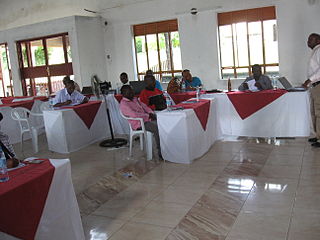
Education for sustainable development (ESD) is defined as education that encourages changes in knowledge, skills, values and attitudes to enable a more sustainable and just society for all. ESD aims to empower and equip current and future generations to meet their needs using a balanced and integrated approach to the economic, social and environmental dimensions of sustainable development. ESD is the term most used internationally and by the United Nations.

The Codex Calixtinus is the main witness for the 12th-century Liber Sancti Jacobi, or the Book of Saint James. It is a pseudepigraph attributed to Pope Callixtus II; its principal author or compilator is referred to as "Pseudo-Callixtus", often identified with French scholar Aymeric Picaud. Its most likely date of compilation is the period of 1138–1145.
Bernard André, O.E.S.A. (1450–1522), also known as Andreas, was a French Augustinian friar and poet, who was a noted chronicler of the reign of Henry VII of England, and poet laureate.

Diodora italica, the keyhole limpet or Italian keyhole limpet, is a sea snail or limpet, a marine prosobranch gastropod mollusk in the family Fissurellidae, the keyhole limpets.

Pseudophilotes abencerragus, the false baton blue, is a butterfly in the family Lycaenidae. It is found on the Iberian Peninsula and in North Africa, Egypt, Israel, Jordan and Saudi Arabia.
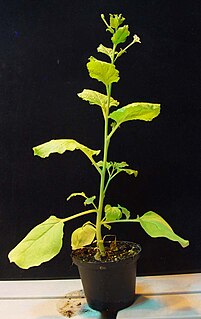
Medicago Inc. is a privately-owned Canadian biotechnology company focused on the discovery, development, and commercialization of virus-like particles using plants as "bioreactors" to produce proteins as candidate vaccines and medications. By using live plant leaves as hosts in the discovery and manufacturing process, the Medicago "Proficia" technology has the goal to create a rapid, high-yield system for its product candidates.

CoVLP is a COVID-19 vaccine developed by Medicago in Canada and GlaxoSmithKline (GSK). It is a coronavirus virus-like particle vaccine grown in the Australian weed, Nicotiana benthamiana.
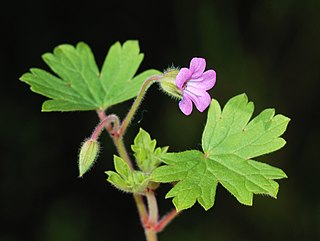
Geranium rotundifolium, the roundleaf geranium, is a species of annual herb in the family Geraniaceae. They have a self-supporting growth form and are associated with freshwater habitat. They have simple, broad leaves, flowers are visited by sweat bees, Small Carpenter Bees, Myopa, and cabbage butterfly. Individuals can grow to 20 cm tall.
Hypericum australe is a species of plant in the family Hypericaceae. Individuals can grow to 24 cm tall.
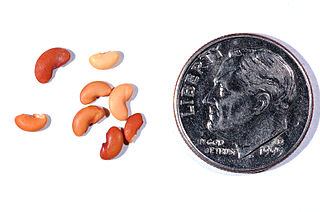
Medicago doliata is a species of annual herb in the family Fabaceae. They have a self-supporting growth form and compound, broad leaves.

Medicago monspeliaca, the hairy medick, is a species of annual herb in the family Fabaceae. They have a self-supporting growth form and compound, broad leaves. Individuals can grow to 0.12 m.
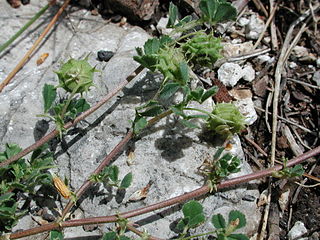
Medicago rigidula, the Tifton burclover, is a species of annual herb in the family Fabaceae. They have a self-supporting growth form and compound, broad leaves. Individuals can grow to 0.50m tall. It is a secondary wild relative of the cultivated crop Barrel Clover, and a tertiary wild relative of cultivated Alfalfa.

Medicago rugosa, the wrinkled medick, is a species of annual herb in the family Fabaceae. They have a self-supporting growth form and compound, broad leaves. Individuals can grow to 0.2 m.

Polypogon viridis, the beardless rabbitsfoot grass, is a species of perennial grass in the family Poaceae. They have a self-supporting growth form and simple, broad leaves. Individuals can grow to 0.43 m.

Scirpoides holoschoenus is a species of perennial sedge in the family Cyperaceae, commonly called the roundhead bulrush. It has a self-supporting growth form and simple, broad leaves. They are associated with freshwater habitat. Individuals can grow to 0.75 m.

Trifolium scabrum, the rough clover, is a species of annual herb in the family Fabaceae. They have a self-supporting growth form and compound, broad leaves. Individuals can grow to 0.12 m.


















